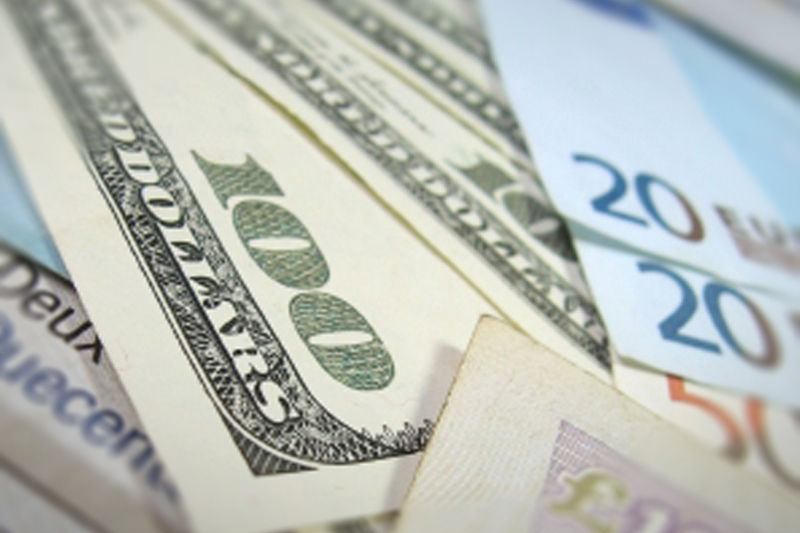Investing.com -- EUR/USD fell mildly on Thursday, extending sharp losses from the previous session, as the dollar surged to fresh a two weeks high after a strong batch of economic data bolstered support for a June interest rate hike from the Federal Reserve.
The currency pair traded in a tight range between 1.1234 and 1.1295 before settling at 1.1265, down 0.0014 or 0.12% on the day. The dollar has closed higher against the euro in three consecutive sessions and four of the last six, rallying slightly from five-month lows. Previously, the greenback tumbled nearly 3% versus its European counterpart after the Federal Open Market Committee (FOMC) lowered its interest rate outlook on March 16 at a closely-watched meeting. The U.S. central bank now expects to raise short-term interest rates no more than twice this year, down from earlier forecasts for as much as four rate hikes in December's outlook.
EUR/USD likely gained support at 1.0538, the low from December 3 and was met with resistance at 1.1496, the high from Oct. 15.
The dollar continued its rebound on Thursday morning after the U.S. Department of Labor reported that initial jobless claims last week fell by 13,000 to 253,000 equaling lows from early-March when the figure bottomed at the lowest level since 1973. The optimistic data followed the release of the Federal Reserve's Beige Book on Wednesday afternoon, which provided indications that domestic wages are starting to increase while the prolonged downturn in oil production could be on the verge of coming to an end. Last week, the U.S. Energy Information Administration (EIA) said weekly crude production fell by 31,000 bpd to 8.977 million bpd. With the sharp declines, U.S. output dipped below 9.0 million bpd for the first time since October, 2014.
Still, the gains in the dollar were limited following the release of soft consumer inflation data on Thursday morning. In March, the Consumer Price Index inched up 0.1% for the month falling slightly below consensus estimates of 0.2% gains. The Core CPI Index, which strips out volatile food and energy prices, also rose by 0.1% one month after jumping 0.3% in February. Citing weak inflation and downbeat consumer spending Atlanta Fed president Dennis Lockhart told Bloomberg that he will not support an April rate hike, reversing his previous stance.
In Europe, consumer inflation throughout the euro zone rose 1.2% in March, one month after inching up by only 0.2% in February. The strong reading fell in line with consensus estimates. In Italy, CPI ticked up 0.2% last month, also matching consensus forecasts.
Fed chair Janet Yellen sent strong indications in late-March that the FOMC will express extreme caution in raising short-term interest rates as headwinds from heightened global financial risks continued to recede slowly. The FOMC has left its benchmark Federal Funds Rate unchanged at a level between 0.25 and 0.50% at each of its first two meetings this year.
Investors also reacted to a surprising move by the Singapore Central Bank to approve further easing measures on Thursday to boost stubbornly low core inflation. The decision sparked a sell-off in the Chinese yuan, which fell to an intraday low of 6.4876 against the dollar, its lowest level in nearly a week.
The U.S. Dollar Index, which measures the strength of the greenback versus a basket of six other major currencies, surged to near two-week highs at 95.21 before settling at 94.94 at the close. On Monday, the index dipped below 94 to hit an eight-month low.
Any rate hikes by the Fed this year are viewed as bullish for the dollar, as investors pile into the greenback in order to capitalize on higher yields.
